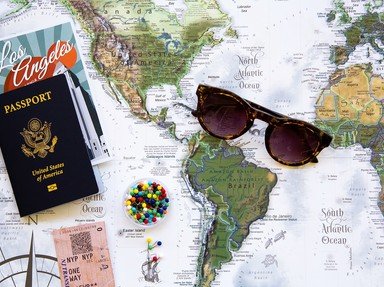Quiz Answer Key and Fun Facts
1. He published the poetry collection "Facile" inspired by his second wife, Nusch. Like his friend Picasso, he was impressed by the destruction of the city Guernica during the Spanish Civil War and wrote a poem about this event. Another famous poem, "Freedom" ("Liberté"), published in 1942, was parachuted by Royal Air Force on the occupied territories. Who was he?
2. André Breton published two Surrealist Manifestos, the first in 1924 and the second in 1929. Surrealist poets used all of the following, except one. Which one?
3. Born in Rome in 1880, he obtained French citizenship two years before his death. He is the author of the poem "Le pont Mirabeau" ("The Mirabeau Bridge"), present in his book "Alcools" published in 1913, and he wrote many poems inspired by the World War I. Who was he?
4. Being known as the author of the poem "The Graveyard by the Sea", Paul Valéry wrote different literary or philosophical essays and he illustrated his writings with his own drawings. Which one of the following statements about him is NOT true?
5. He studied medicine, he fought in both world wars and received military honors in both of them. His was influenced by his powerful attachment to his wife Elsa Triolet, whose name appears in titles such as "Les yeux d'Elsa", "Le fou d'Elsa". He was a poet, a novelist and a journalist. Who was he?
6. The author of the prose poem "Jacquemard and Julia" is a poet of revolt and refusal: he disengages from surrealist principles, becomes a member of the Résistance, refuses public honors. Due to his choleric temperament, he destroys in 1986, two years before his death, the museum dedicated to him. Who is he?
7. He developed automatic writing under hypnosis. Like many other poets from the first half of the 20th century, he was involved in military fighting during the wars. He adhered to the French Résistance movement, but he was captured and died in a camp of deportation in Czechoslovakia in 1945. Who was he?
8. Born in 1900, he published his book of poems "Paroles" in 1946. These poems had a tremendous public success, unusual for a poetry book. They were written in a simple and familiar style, sometimes combined with black humor. Who was he?
9. He was the author of the poem "The Young Fate" ("La Jeune Parque"), using over 500 alexandrine lines. Who was he?
10. Embracing a diplomatic career, this poet exiled himself in the USA during the occupation of France in WWII. His poems became more appreciated after publishing "Amers" in 1957. He was awarded the Nobel Prize for Literature in 1960. Who was he?
Source: Author
alpinesquill
This quiz was reviewed by FunTrivia editor
agony before going online.
Any errors found in FunTrivia content are routinely corrected through our feedback system.
